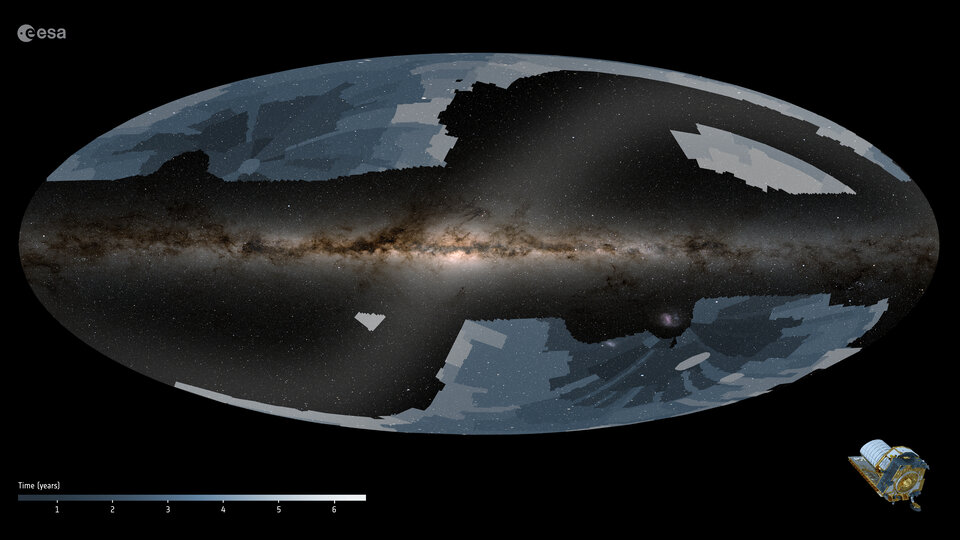16.02.2024
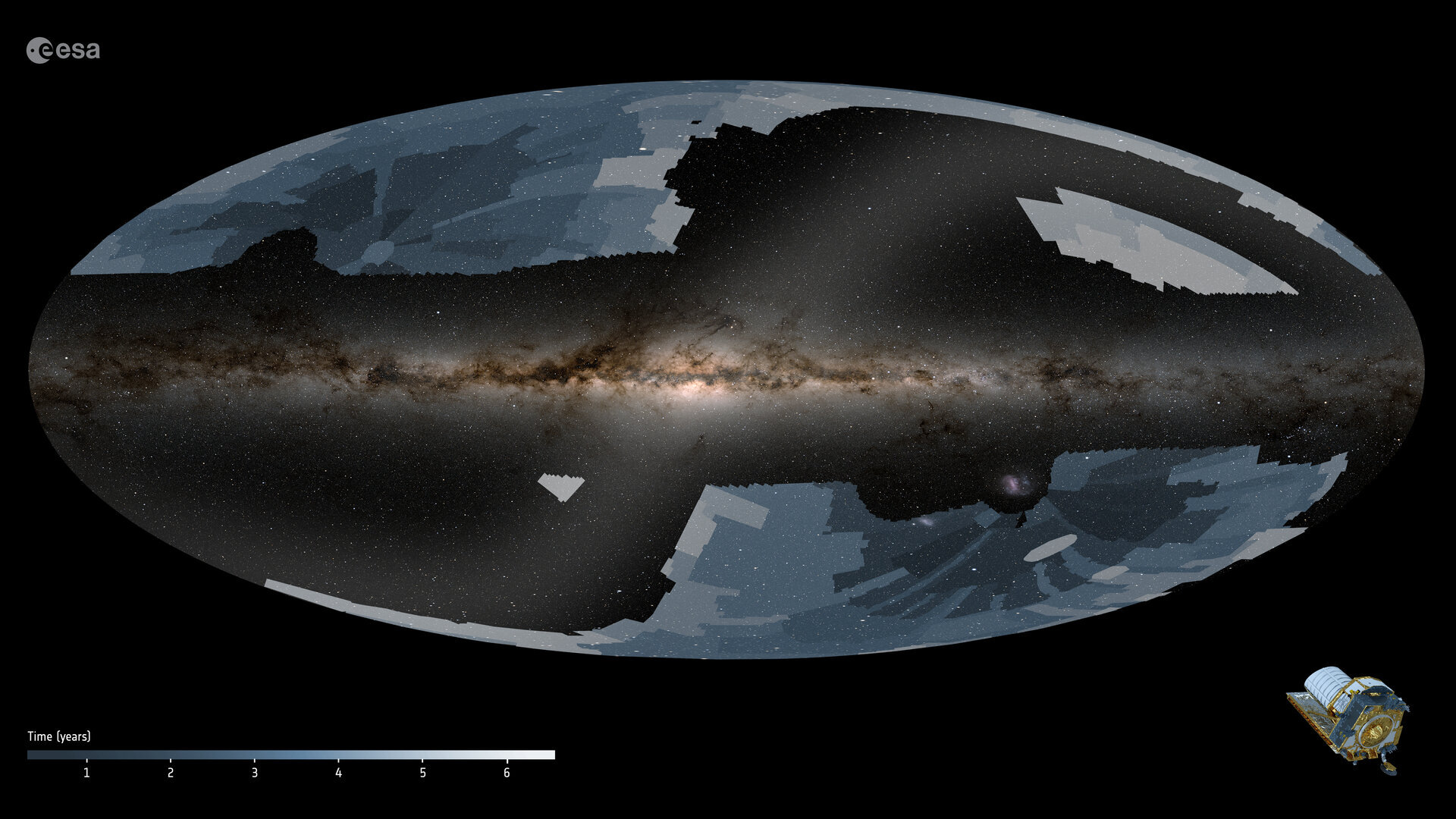
Today, ESA’s space telescope Euclid begins its survey of the dark Universe. Over the next six years, Euclid will observe billions of galaxies across 10 billion years of cosmic history. Learn how the team prepared Euclid in the months after launch for this gigantic cosmic quest.
Euclid, one of the most precise and stable space telescopes ever built, was launched on 1 July 2023. During its first months in space, teams across Europe turned on, tested, and prepared the mission for routine science observations. However, these ‘routine’ science observations are no piece of cake.
50 000 galaxies in one shot
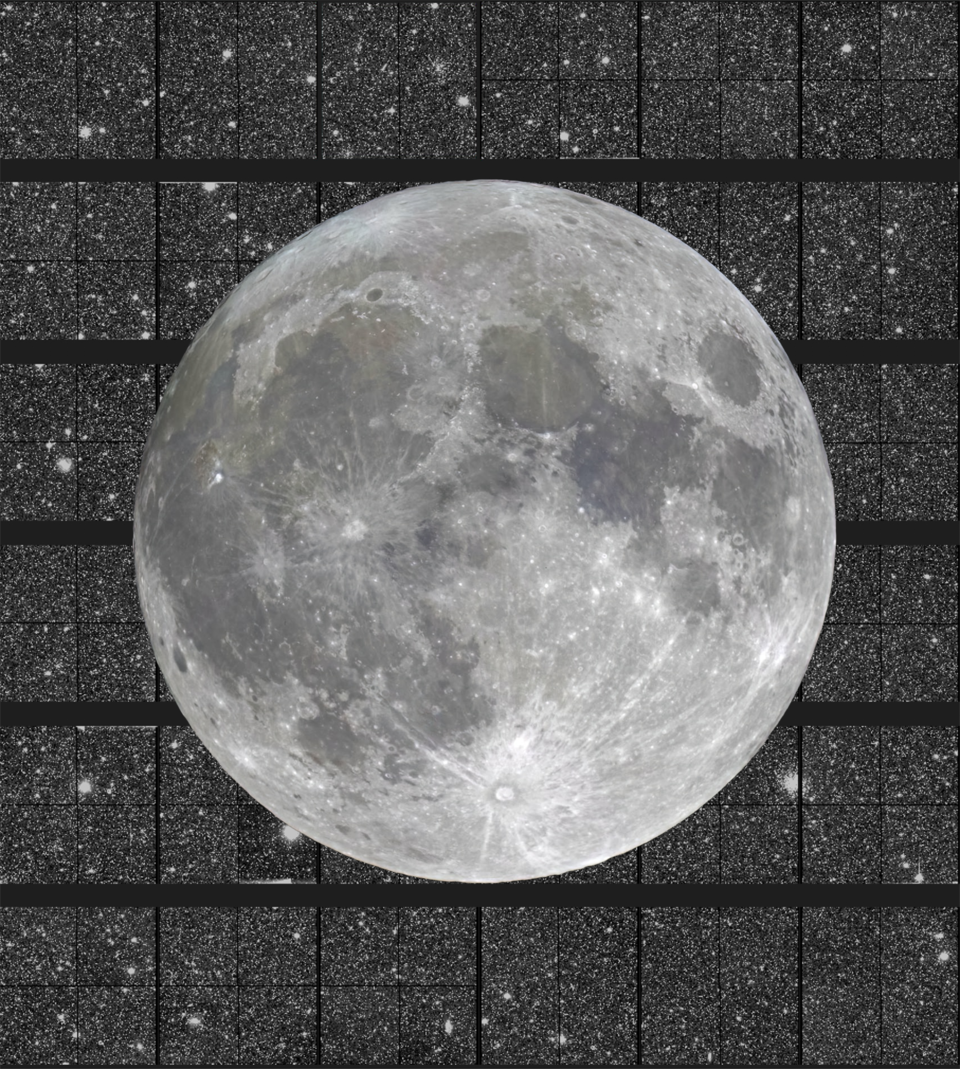
One of Euclid’s strengths is that it can observe a large area of the sky in one shot. This is crucial for a mission whose primary objective is to map more than one third of the sky in six years.
Euclid will follow a so-called ‘step-and-stare’ observation mode. This means that the telescope will stare at one area of the sky for about 70 minutes, producing images and spectra, and it then takes four minutes to move to the next area of the sky. During its entire mission, Euclid will perform more than 40 000 of these ‘pointings’.
“Thanks to its wide-eyed look at the cosmos, and its long exposure time and sensitivity, the number of galaxies that Euclid can see in one pointing is huge,” explains Roberto Scaramella, Euclid survey scientist at the National Institute for Astrophysics (INAF) in Italy, and lead of the consortium survey group since the beginning of the mission.
Roberto had to make sure that the survey was designed in such a way that it meets the science goals. A main goal for Euclid is to measure in more detail than ever before the shapes of billions of galaxies over billions of years of cosmic history, to provide a 3D view of the dark matter distribution in our Universe.
“To study the individual distortions of galaxies by dark matter, we need to observe at least 1.5 billion galaxies. Euclid will observe the shapes of around 50 000 galaxies with the needed accuracy in one shot, and will spot many more faint ones,” adds Roberto.
However, soon after turning Euclid’s instruments on for the first time, the team realised that the entire survey needed to be re-designed.
A change in attitude
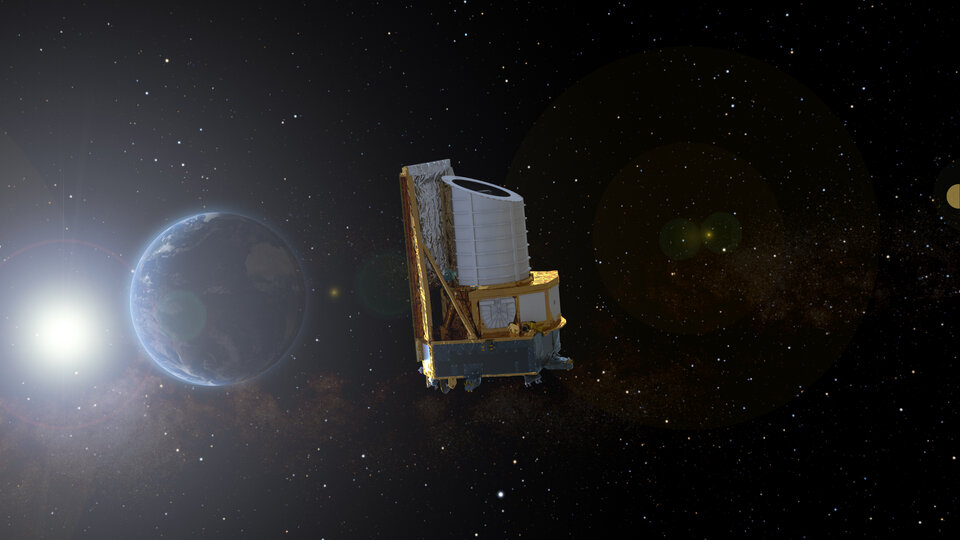
The problem was that a tiny amount of unwanted sunlight was reaching Euclid's visible instrument (VIS) at specific angles, even with the spacecraft’s sunshield (its back) turned towards the Sun.
“The original plan was for Euclid to keep its sunshield facing the Sun. But soon after launch, disturbing light from the Sun was detected in the test images,” explains Ismael Tereno of the University of Lisbon, Portugal, and lead of the Euclid survey operations support team, operated with the support of the Portuguese Space Agency.
“After intense troubleshooting, science, engineering, and industrial teams found that for this light to disappear, Euclid needed to observe with a different orientation (attitude) with respect to the Sun. This meant that the original survey design would no longer work. We had to quickly come up with a new strategy, implement it, and test it,” adds João Dinis, also from the University of Lisbon, Portugal who together with Ismael was responsible for the survey (re-)design.
To minimise the effect of ‘stray’ sunlight, the teams found out that Euclid needs to observe with a more restricted rotation angle, such that the sunshield is not directly facing the Sun, with a small but impactful tilt in one direction. With this new restricted attitude, parts of the sky could not be reached from any point in Euclid’s orbit around L2. “It proved very difficult to find a good survey solution, and we had to go back to the drawing board,” recalls Ismael.
A giant puzzle
It was the start of a very intense phase for João, Ismael and the survey operations and science teams. “João quickly had the insight of what needed to be changed, and then worked around the clock to propose a workable re-design,” says Ismael.
Designing the Euclid survey was a giant puzzle. Aside from the scientific goals and the angle that Euclid needed to observe from, there are many other factors that needed to be considered.

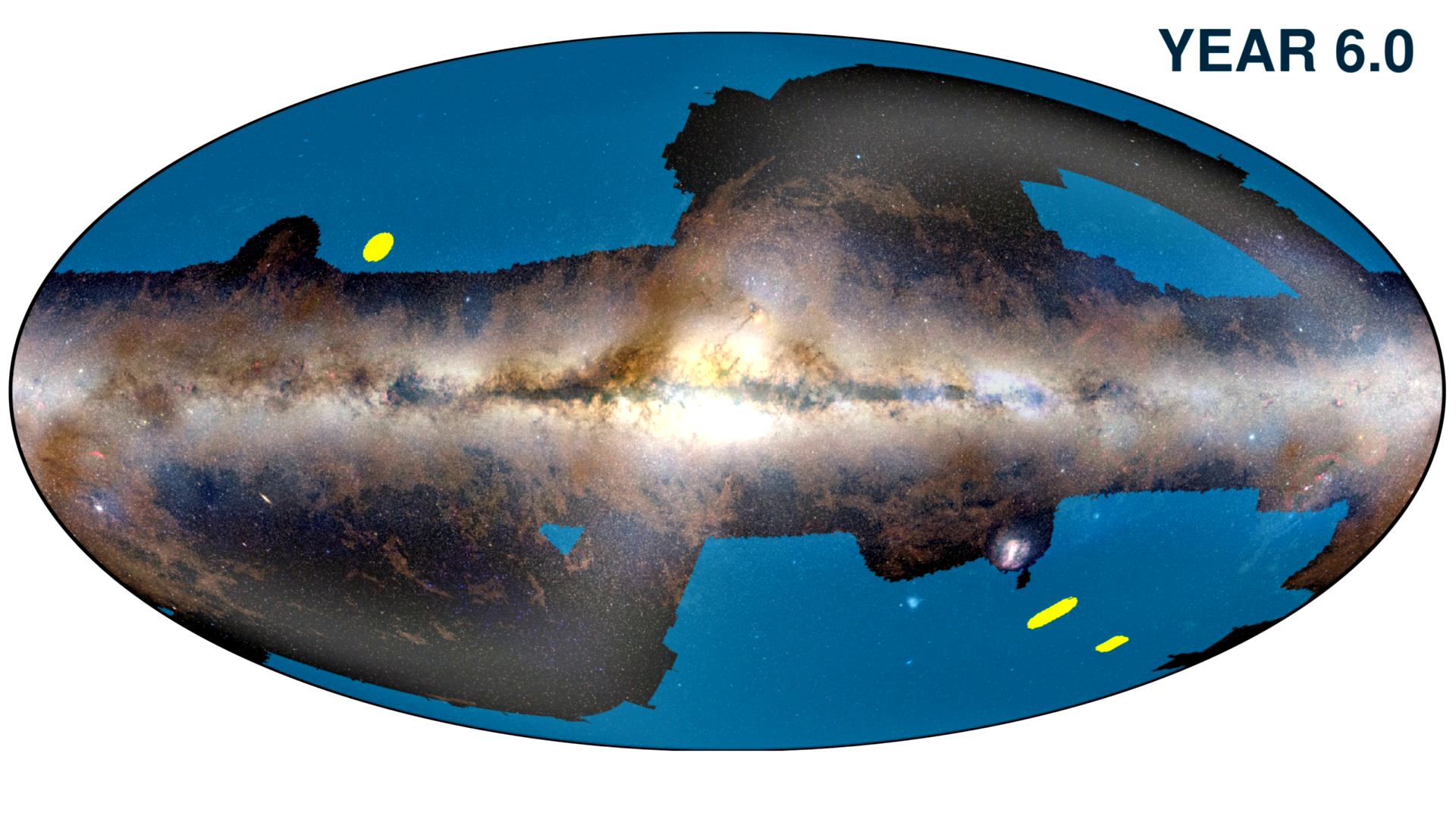
Access the video
The largest fraction of the mission's observations will be devoted to a ‘wide’ survey, covering more than one third of the sky. The wide survey is complemented by a deep survey, taking about 10% of the total observing time. Aside from that, routine calibration observations also had to be scheduled to fit the puzzle.
Xavier Dupac, ESA survey scientist for the Science Operation Centre at ESAC in Spain, made sure that the survey designed by João, Ismael and the team could be executed. “For example, we need to take into account the time it takes for the spacecraft to rotate from one observing position to the next. These times need to be included in the survey design in addition to the actual observing time,” explains Xavier.
In the end, the teams came up with a workable solution that meant more overlaps between adjacent observations had to be made. Euclid’s survey is now slightly less efficient, but all necessary areas of the sky can be reached and the overall loss in survey area is kept to a minimum.
“The teams worked very hard to redesign the survey in a short amount of time, this is a major achievement," says Valeria Pettorino, Euclid project scientist for ESA. “And this is not the end of the story. As the mission advances and the scientific results start to arrive, the teams will continue to optimise the survey, and be ready to adapt it if needed.”
Looking ahead at Euclid’s first survey year
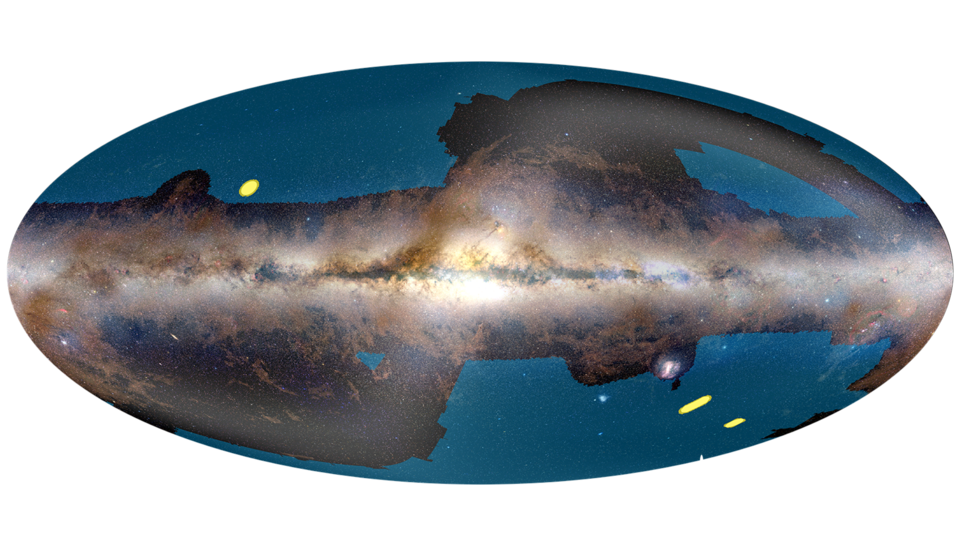
Today, Euclid officially started its survey. The telescope is currently scheduled to observe a patch of 130 square degrees – more than 500 times the area of the full Moon – over the course of the next 14 days. This patch is in the direction of the constellations of Caelum and Pictor in the Southern Hemisphere.
In the coming year, Euclid will cover around 15% of its survey. This first year of cosmology data will be released to the community in summer 2026. A smaller data release of deep field observations is foreseen for spring 2025.
About Euclid
Euclid is a European mission, built and operated by ESA, with contributions from NASA. The Euclid Consortium – consisting of more than 2000 scientists from 300 institutes in 13 European countries, the US, Canada and Japan – was responsible for providing the scientific instruments and will provide the scientific data analysis. ESA selected Thales Alenia Space as prime contractor for the construction of the satellite and its service module, with Airbus Defence and Space chosen to develop the payload module, including the telescope. NASA provided the detectors of the Near-Infrared Spectrometer and Photometer, NISP. Euclid is a medium-class mission in ESA’s Cosmic Vision programme.
Quelle: ESA
----
Update: 21.03.2024
.
Operations begin to de-ice Euclid’s vision
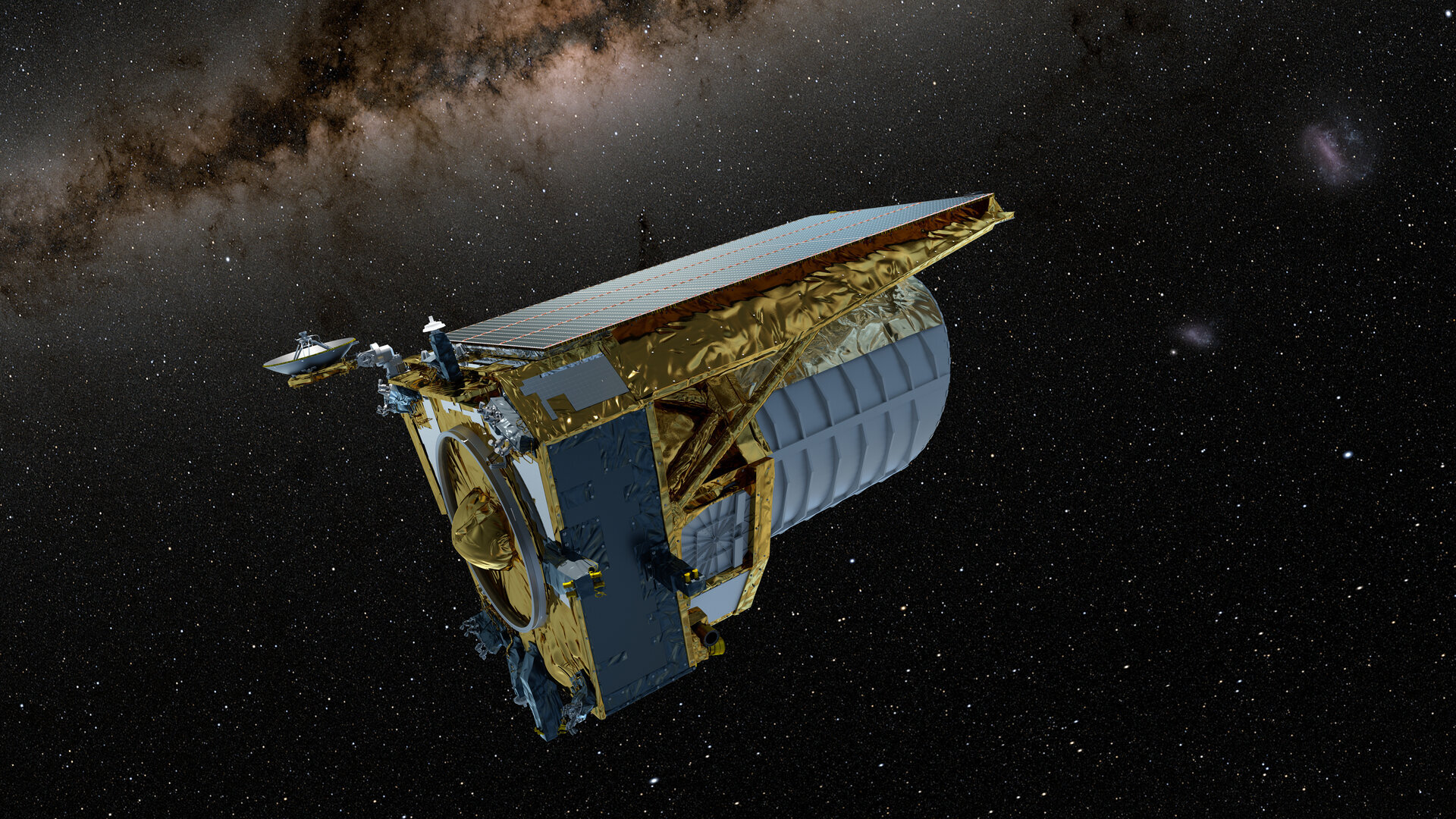
Update 20 March: First results confirm successful operations
Euclid’s sharp vision is restored. The initial analysis of Euclid’s data validates the de-icing approach devised by the team. A more in-depth analysis of the results is ongoing and an update will follow in the coming days.
A few layers of water ice – the width of a strand of DNA – are starting to impact Euclid’s vision; a common issue for spacecraft in the freezing cold of space, but a potential problem for this highly sensitive mission that requires remarkable precision to investigate the nature of the dark Universe. After months of research, Euclid teams across Europe are now testing a newly designed procedure to de-ice the mission's optics. If successful, the operations will validate the mission teams’ plan to keep Euclid’s optical system as ice-free as possible for the rest of its life in orbit.
Euclid’s vision fogs as it steps ‘outside’
In recent months, while fine-tuning and calibrating Euclid’s instruments after launch and preparing for the start of the mission’s first survey, science operations experts noticed a small but progressive decrease in the amount of light measured from stars observed repeatedly with the visible instrument (VIS).
Euclid is experiencing a common problem that spacecraft face once they get to space: water absorbed from the air during assembly on Earth is now gradually being released from certain components in the spacecraft, teased out by the vacuum of space.
In the freezing cold of Euclid’s new environment, those released water molecules tend to stick to the first surface they land on – and when they land on this highly sensitive mission’s optics, they can cause trouble.
“We compared the starlight coming in through the VIS instrument with the recorded brightness of the same stars at earlier times, seen by both Euclid and ESA’s Gaia mission,” explains Mischa Schirmer, calibration scientist for the Euclid consortium and one of the main designers of the new de-icing plan.
“Some stars in the Universe vary in their luminosity, but the majority are stable for many millions of years. So, when our instruments detected a faint, gradual decline in photons coming in, we knew it wasn’t them – it was us.”
It was always expected that water could gradually build up and contaminate Euclid’s vision, as it is very difficult to build and launch a spacecraft from Earth without some of the water in our planet’s atmosphere creeping into it.
For this reason, there was an ‘outgassing campaign’ shortly after launch where the telescope was warmed up by onboard heaters and also partially exposed to the Sun, sublimating most of the water molecules present at launch on or very near Euclid’s surfaces. A considerable fraction, however, has survived, by being absorbed in the multi-layer insulation, and is now being slowly released in the vacuum of space.
After a huge amount of research – including lab studies into how minuscule layers of ice on mirror surfaces scatter and reflect light – and months of calibrations in space, the team determined that several layers of water molecules are likely frozen onto mirrors in Euclid’s optics. Likely just a few to few tens of nanometres thick – equivalent to the width of a strand of DNA – it’s a remarkable testament to the mission’s sensitivity that it is detecting such tiny amounts of ice.
While Euclid's observations and science continue, teams have come up with a plan to understand where the ice is in the optical system and mitigate its impact now and in the future, if it continues to accumulate.
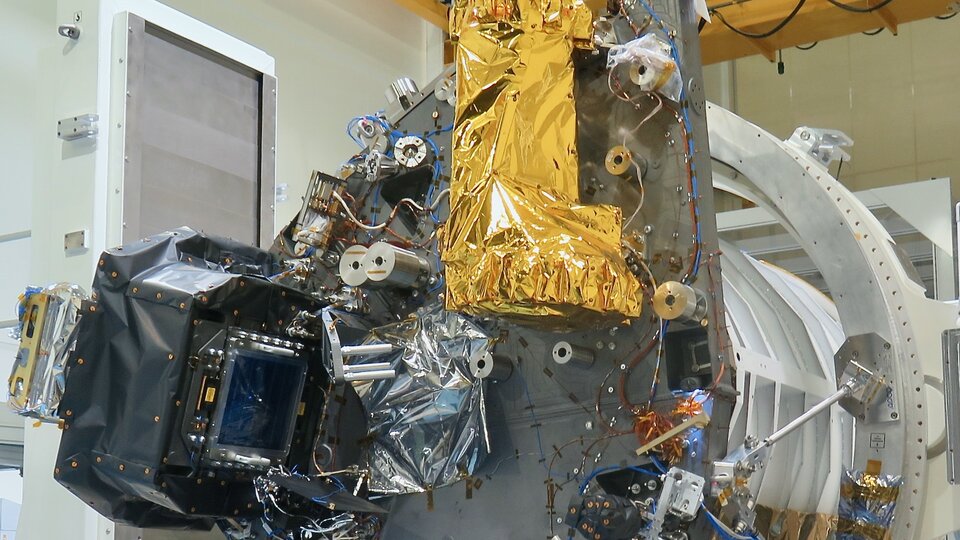
Brand-new plan to decontaminate Euclid from 1.5 million km away
“A complex mission requires a united response from teams across Europe, and I'm incredibly thankful for the effort and skill that so many have poured into this,” says Ralf Kohley, Euclid Instrument Operations Scientist who coordinated the response.
“It took work from teams at ESA's ESTEC technical heart in the Netherlands, the ESAC science operations centre in Madrid and the Flight Control Team at ESOC mission control in Darmstadt – but we couldn't have done it without the Euclid consortium and the critical inputs we got from spacecraft prime contractor Thales Alenia Space and its industrial partner Airbus Space.”
The easiest option would be to use the decontamination procedure developed well before launch and heat the entire spacecraft. Teams at mission control would send the commands to turn on every onboard heater for several days, slowly increasing temperatures from about –140 °C to, in some parts of the spacecraft, a ‘balmy’ –3°C.
Doing this would clean the optics but would also heat the entire mechanical structure of the spacecraft. As most materials heat, they expand and don’t necessarily return to precisely the same state after a week-long cool-down, meaning a potentially subtle difference in Euclid’s optical alignment. This won’t do for such a sensitive mission where effects can be noticed on the optics from a temperature change of just a fraction of a degree, requiring at least several weeks of fine recalibration.
“Most other space missions don’t have such demanding requirements on ‘thermo-optical stability’ as Euclid,” explains Andreas Rudolph, Euclid Flight Director at ESA's mission control.
“To fulfil Euclid’s scientific goals of making a 3D map of the Universe by observing billions of galaxies out to 10 billion light-years, across more than a third of the sky, means we have to keep the mission incredibly stable – and that includes its temperature. Switching on the heaters in the payload module therefore needs to be done with extreme care.”
To limit thermal changes, the team will begin by individually heating low-risk optical parts of the spacecraft, located in areas where water released is unlikely to contaminate other instruments or optics. They will start with two of Euclid’s mirrors that can be warmed up independently. If the loss in light persists and starts to have an impact on science, they will continue to warm up other groups of Euclid’s mirrors, checking each time what percentage of photons they get back.
Small amounts of water will continue to be released within Euclid over the life of the mission, so a long-term solution is needed to regularly de-ice its optics without taking up too much precious mission time – Euclid has six years to complete its survey.
"VIS will be measuring weak gravitational lensing – how matter in the Universe has bunched together under the influence of gravity as the Universe expands – and to understand this, the more galaxies we observe, the better,” explains Reiko Nakajima, VIS instrument scientist.
"De-icing should restore and preserve Euclid's ability to collect light from these ancient galaxies, but it’s the first time we're doing this procedure. We have very good guesses about which surface the ice is sticking to, but we won't be sure until we do it.”
Mischa concludes, “Once we have isolated the affected area, the hope is that we can then simply warm up this isolated part of the spacecraft in the future as needed. What we are doing is very complex and fine-grained, so that we can save valuable time in the future – I’m extremely excited to find out just where this water ice is accumulating, and how well our plan will work.”
Despite how common this contamination issue is for spacecraft operating in cold conditions, there is surprisingly little published research about precisely how ice forms on optical mirrors and its impact on observations. Not only could Euclid reveal the nature of dark matter, but it could also shed light on an issue that has long plagued our roving eyes in space, peering down at Earth and out across the Universe.
Quelle: ESA

